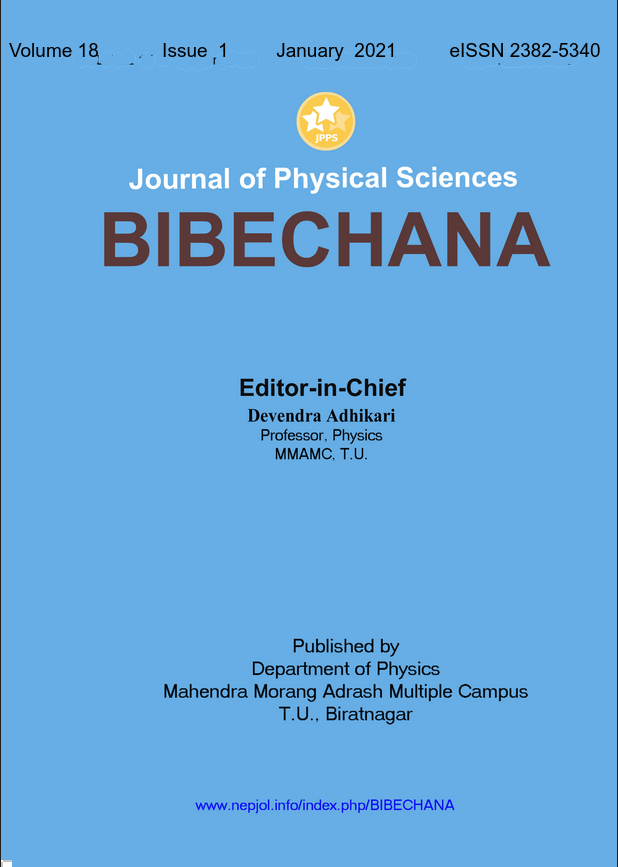A spectroscopic study of the low redshift dwarf galaxy SDSS J134326.99+431118.7 to calculate star formation rate
DOI:
https://doi.org/10.3126/bibechana.v18i1.29466Keywords:
Dwarf galaxy, Star formation rate, Characteristic peaks, H_α lineAbstract
We present a spectroscopic study of an interacting emission-line dwarf galaxy SDSS J134326.99+431118.7. We analyzed eight-strong emission lines of wavelength in a range of 3902.1Å to 6619.1Å. Among them, the strongest emission line is OIII, with an intensity of 1043.6 x 10-17 erg/s/cm2/Å. These characteristic lines show a perfect Gaussian fit with a coefficient of regression greater than 98%, where the derived full width half maximum (FWHM) is less than 3.8 Å. The line ratio between Ha and Hb, (Ha/ Hb), is 2.73. This suggests that the galaxy is a starburst galaxy. Star Formation Rate (SFR) of the galaxy derived from Ha emission line flux is 0.019 and emission line metallicity derived from flux ratio between NII and Ha is 7.85 dex. These morphological and physical properties of SDSSJ134326.99+431118.7 are very similar to those of a typical Blue Compact Dwarf (BCD) galaxy. We conclude that we have presented another evidence of forming a BCD-type galaxy through a merger.
BIBECHANA 18 (1) (2021) 100-107
Downloads
Downloads
Published
How to Cite
Issue
Section
License
This license enables reusers to distribute, remix, adapt, and build upon the material in any medium or format for noncommercial purposes only, and only so long as attribution is given to the creator.




